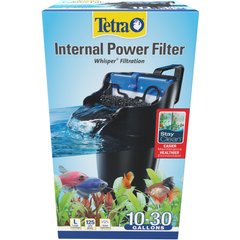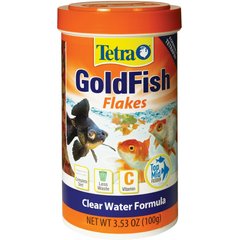12 Types of Goldfish

Photo by sergio_kumer via iStock / Getty Images Plus
Social, low-maintenance, and beautiful, goldfish are great additions to home aquariums, whether you’re a first-time fish caretaker or a seasoned pro.
But which goldfish is right for you? There are many types of goldfish, each with their own unique characteristics and considerations.
How To Care for Pet Goldfish
First things first, before bringing home your new pet, it’s important to know how to keep your goldfish healthy. Consider these quick tips:
- Habitat: At a minimum, a single goldfish needs at least a 20-gallon habitat. Increase the size of your goldfish tank as your pet grows.
- Housemates: Goldfish can be kept alone, or in schools if you get a large enough tank. Goldfish can also share a tank with coldwater community fish.
- Cleaning: Your tank should have a filter system; regular cleanings and water changes are essential as well.
- Food: Goldfish should be fed a mix of pellets, frozen food, and freeze-dried food.
- Veterinary care: If you are concerned about the health of your fish, certified aquatic veterinarians make house calls and even offer telehealth consultations.
Recommended Products
12 Different Types of Goldfish
Considering a finned friend? These are some of the most common goldfish types.
1. Common Goldfish

The most recognizable of goldfish varieties, the Common goldfish traces its roots back to wild carp from East Asia.
In addition to the signature orange hue, Common goldfish can be a wide range of colors, including red, black, blue, green, yellow, and white.
2. Comet Goldfish

Although frequently confused with the Common goldfish, Comet goldfish are a distinct breed.
Comet goldfish have smaller bodies and longer fins, giving them the appearance of a comet when swimming through the water.
Comet goldfish are distinguished by their large, forked tails, and are known to be particularly active and playful.
3. Shubunkin Goldfish

Similar in size and shape to the Comet, Shubunkin goldfish are known for their calico markings and pearly scales.
Shubunkins have white or translucent bodies with overlapping patches of black, blue, yellow, and red. These distinct markings typically extend into the fins, making for a flashy fish.
4. Ryukin Goldfish
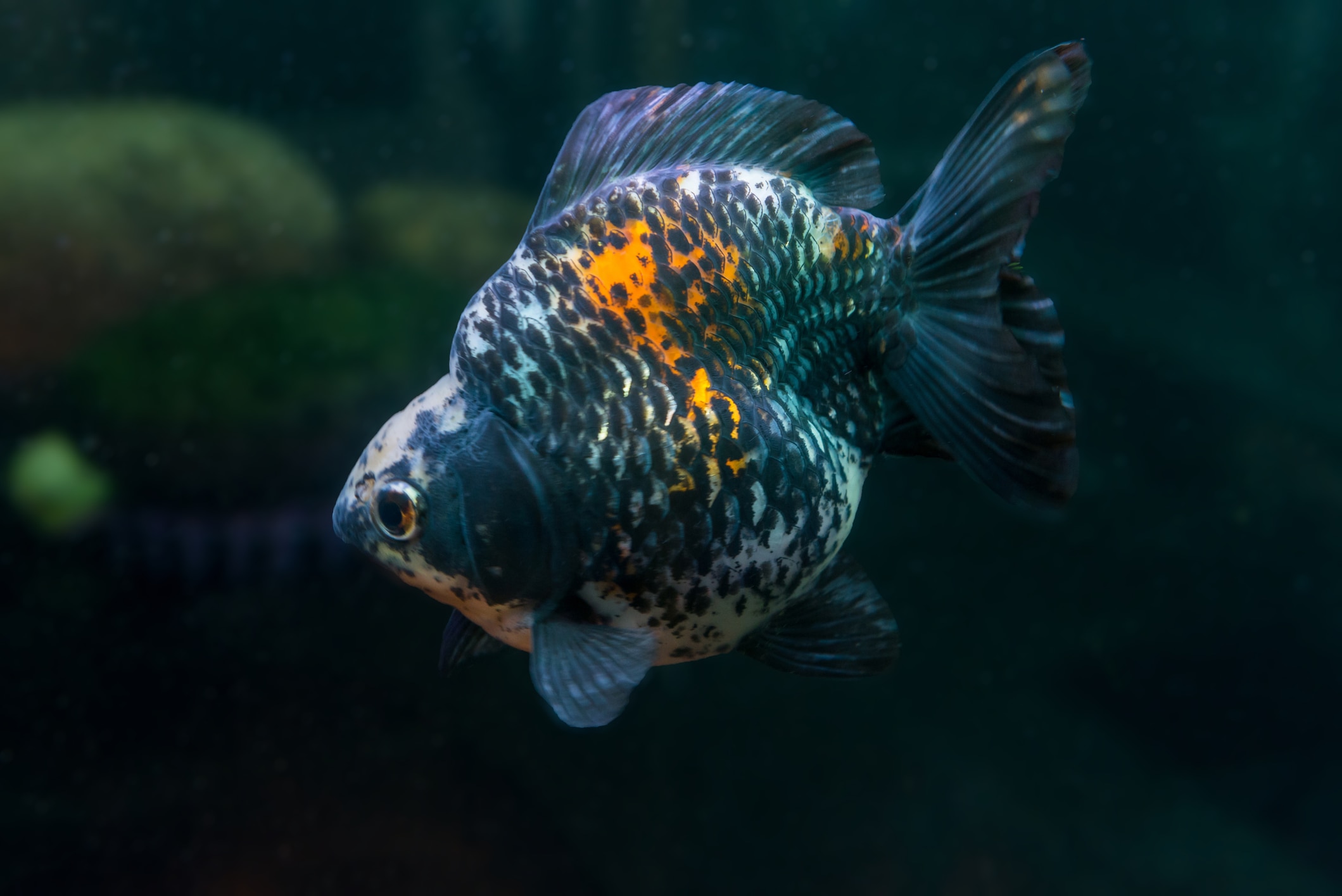
Ryukin goldfish have small, pointed heads, short bodies, and distinctive humped backs. While striking, this unusual shape makes them slow swimmers, and they tend to be less active than other varieties of goldfish.
5. Oranda Goldfish

Oranda goldfish are known for the distinctive bubble-like protrusion on top of their heads, known as a wen.
The wen can take up to two years to fully develop and may be limited to the crown or cover most of the head. The fish’s vision can be limited depending on the size and shape of the wen. In the case of overgrowth, a veterinarian may need to trim the wen back.
6. Ranchu Goldfish

Known as the “King of Goldfish” in Japan, the Ranchu is marked by a round body, hunched back, and missing dorsal fin. Some Ranchu goldfish have a wen.
Because of their body shape and lack of dorsal fins, these gorgeous fish are inefficient swimmers and have a unique, worm-like way of moving through the water.
7. Fantail Goldfish

The Fantail goldfish is hard to miss, boasting a “double tail” with two top and two bottom caudal fins.
Although beautiful, the Fantail’s large, flowing fins create a drag and make swimming more difficult. Fantail goldfish require bigger tanks to maneuver more comfortably and safely through the water.
8. Veiltail Goldfish

The Veiltail is a variety of the Fantail, distinguished by an extra-long double tail and exaggerated fins throughout the body. The Veiltail’s signature fins can make swimming difficult, and they may have trouble competing for food with more agile species.
Veiltails shouldn’t be kept with aggressive fish like bettas that could damage their delicate fins, and any type of hard or pointy tank decor should be avoided.
Recommended Product
9. Lionhead Goldfish
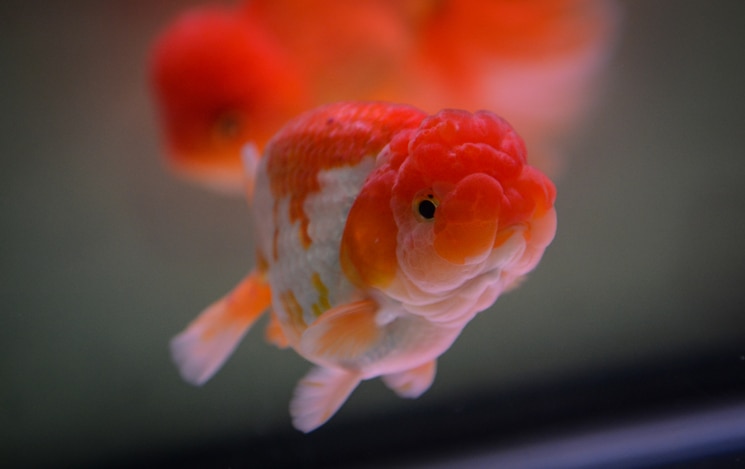
Lionhead goldfish have an exaggerated wen that completely covers the head and cheeks, creating a mane-like appearance. Additionally, like the Ranchu, Lionheads lack a dorsal fin.
The Lionhead goldfish’s unique bodies result in poor eyesight, inefficient swimming, and compromised “hunting.” Thus, Lionhead goldfish do best in tanks with calm, slow fish.
10. Celestial Eye Goldfish

Celestial Eye goldfish are unmistakable for their large, protruding eyes that look upward. The eyes appear normal after hatching but enlarge gradually and eventually shift to gaze vertically.
Although they don’t have dorsal fins, Celestials are adept swimmers. Their oversized eyes are vulnerable to injury, so rocks, sharp decor, gravel, and artificial plants should be avoided.
Recommended Product
11. Nymph Goldfish
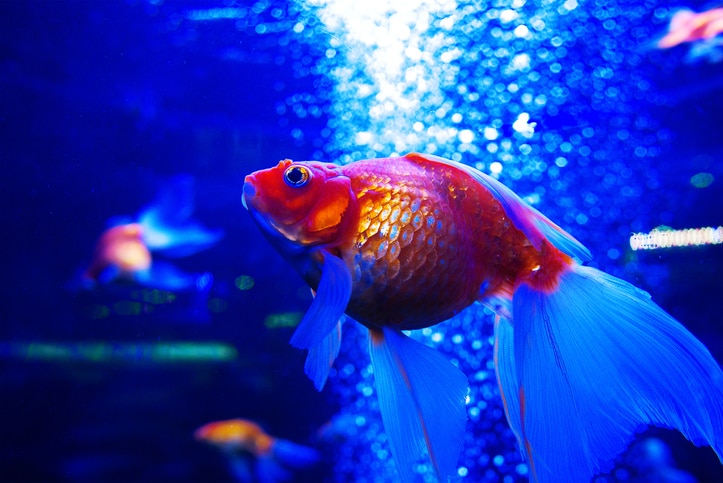
The Nymph goldfish is a specialty breed developed to combine the rounded body of the Fantail with the single tail of the Comet.
While not as showy as their long-finned relatives, Nymph goldfish are extremely hardy and can thrive in a number of environments alongside a wide variety of other fish.
12. Black or Red Moor Goldfish

Black Moor and Red Moor goldfish are a variety of Telescope Eye goldfish. They have large, protruding eyes and long, flowing fins.
Moors can range from deep, velvety black to light gray, and many develop rust-colored patches as they mature. Moors that are predominantly rust-colored are referred to as Red Moors.
Moors have poor vision and large, vulnerable eyes, so their aquariums should not contain sharp objects.
This content was medically reviewed by Jessie Sanders, DVM.

